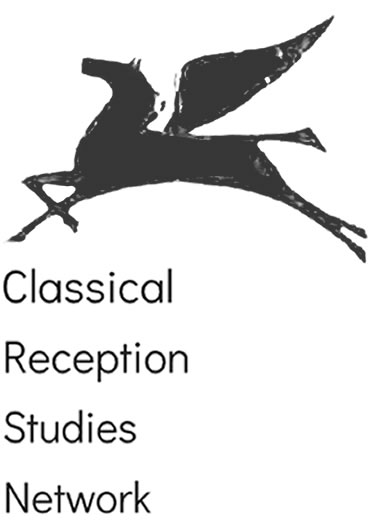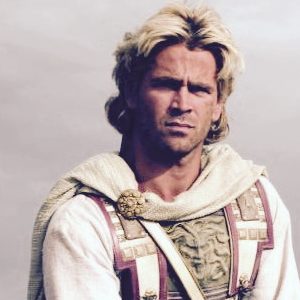A recent post on a Facebook Group asked what the “best” film versions of the Iliad, Odyssey and Aeneid were. BIG QUESTION, was my immediate reaction. After all, how do you qualify ‘best’, when you’re thinking about cultural objects? And is it different when those objects are examples of classical reception?
I don’t think this is a trivial question for those of us interested in reception studies with a focus on popular culture. Most academics have had the experience of marking undergraduate essays where critical discussion is replaced by subjective assessments of value. In my experience this is even more prevalent when the topic is film. Indeed it can feel as if discussing ‘the best film’ on a particular topic is perceived by students as the purpose of this strand of reception studies. And ‘best’ is most often identified with ‘most authentic’: which is taken to mean the adaptation that most closely follows the narrative, chronology, and (most importantly) the visual and aural conceptions of antiquity students have acquired through their studies.
But if best is a contested term, authenticity is even more so. And it can be a particular problem for film with its capacity (in classical Hollywood cinema, its imperative) to present a constructed reality with a contained linear narrative to a largely unknown audience. Is it authentic when it matches the vision of the ancient world we’ve acquired through our studies of ancient literature and material culture? Or when it recreates the experience of consuming the text? And, if the latter, how can we know what the experience of cultural consumption was for an ancient audience?

Consider also the vision of antiquity already held by a non-scholarly audience, most likely from previous films and television. Does this also represent a kind of authenticity, albeit not to an ancient source? To witness the force of this, you need only look at critical responses to new films featuring previously portrayed figures. In Oliver Stone’s Alexander (2004), for instance, the Irish accents of the Macedonians were frequently queried. (Juliette Harrisson’s Pop Classics blog has a more interesting take on this aspect of the film.) But no-one asked why Alexander spoke in theatrical English in Robert Rossen’s 1956 Alexander the Great: that performance was accepted because it shared a common ancestry with previous leads in post-war Hollywood epics set in antiquity.
As commercial products, films must negotiate audience desires for familiarity and recognition with their ambitions to create something new. Sometimes taking a chance on novelty works well, but the mainstream film industry’s innate conservatism means experimentation must be balanced with repetition. In Hercules (2014), the mythological hero is played by Dwayne Johnson, known as The Rock in his days as a professional wrestler. This sits firmly in the tradition of casting a highly muscular sportsman turned actor as the semi-divine son of Zeus. Previous cinematic Hercules have included Steve Reeves, Arnold Schwarzenegger, and Lou Ferrigno: all successful professional bodybuilders. The safety of this familiar convention makes it possible to experiment with the narrative, adapting Steve Moore’s comic book Hercules: The Thracian Wars to make Hercules the leader of a band of mercenaries, rather than the solitary demi-god cinema audiences were more used to.
It might also be noted that there can be such a thing as too much historical authenticity. As an historical costume advisor on Alexander, the historian Lloyd Llewellyn-Jones had to talk Stone out of insisting on murex to dye fabrics purple for the film. One is reminded of the story that Cecil B. DeMille insisted on genuine gold cups for the barge scene in his 1934 Cleopatra, despite the fact that it would screen in black and white. But we should also remember that this is just that: a story (no doubt a story for which studio publicists would have been most grateful). A similar suspicion arises with the story that the recent remake of Ben Hur (2016) was denied permission to film in the Circus Maximus in Rome and had to settle for a nice, convenient, fully-facilitated set at Cinecitta.
One thing I’m not arguing here is that films should be encouraged to completely ignore historical detail. Indeed, one of the reasons antiquity remains a popular setting for filmmakers is its visual and narrative familiarity. What I would argue though is that often the most interesting (and always the most productive) films in terms of teaching tools achieve their moments of ‘authenticity’ through other means than visual detail.
And that brings me back to the original question about the ‘best’ versions of the Iliad, Odyssey and Aeneid. The author of that question qualified it by explaining that he was looking for films that would offer a good introduction to the ancient texts for schoolchildren. Now, if I’m really thinking about what is best, what I’m actually looking for is ‘most fitting for purpose’. In this case, I’m tempted to answer that Wikipedia would do a better job. Certainly I’d be more likely to look at children’s literature than film, which does quite a different job to written texts. But if you want to use films to get thinking about the epic poems, then here are my suggestions:

The Iliad
The Iliad’s short chronology and high level of detail makes it relatively easy to pick out a small part to focus on. Barry Purves’ short 3D animation, Achilles (1995), packs its 11 minutes with an enormous amount of detail by taking full advantage of the capacity of film, and particularly animated film, to incorporate multiple styles of communication and to move between viewpoints. The narrative focuses on Achilles and his (eventually) erotic relationship with Patroclus, with the central characters depicted as moving statues. Their stories unfold on a small theatrical stage, with props and backdrops representing an array of signifiers from the ancient world including shields, pottery and wall friezes. Spoken narrative is secondary to visual communication here, prompting ideas for discussion about storytelling, staging and recognition.
Troy (2004) can also be used as a useful tool to open debate. In particular, it can be examined as a film about storytelling, framed by Odysseus’ opening question, “Will our actions echo across the centuries?”, and closing, “If they ever tell my story…”. Other references to storytelling and mythmaking abound throughout the film, with the myth of Achilles himself and how it might have come about foremost in the diegesis.
The Odyssey
Unsurprisingly, there are lots of good options for this as it is the most cinematic of ancient epic poems. Of those set in antiquity, Ulysses (1954) is especially interesting for its use of the same actress (Silvana Mangano) to play both Circe (who also has some elements of Calypso) and Penelope. This could prompt thinking about the narrative function of women in the poem, as well as the cues that give us our visualisations of figures in ancient literature.

Of adaptations with more contemporary settings, O Brother Where Art Thou? (2000) is usefully arranged in episodes, mimicking the Odyssey, and offering opportunities to discuss structure and oral storytelling. This structure also makes it easy to consider individual episodes and how they might align to their counterparts in the poem. For instance, the Polyphemus episode is reconstructed in the picnic with Big Dan Teague. There are obvious parallels which include Big Dan’s eyepatch/Polyphemus’s single eye; chicken bones /bones of Odysseus’s crew; branch/club. However, it is worth looking more deeply at the ethical basis for the narrative – in both cases, an abuse of hospitality – and what that tells us about its importance in ancient and more recent societal structures. It’s also possible to read the film as a quest for knowledge, re-enacting Odysseus’s almost fatal curiosity.
The Aeneid
It’s much more difficult to suggest things for this: neither the brutally single-minded morality nor the shape of the narrative offer a natural fit with the imperatives of commercial filmmaking. The one film that does adapt the poem is The Legend of Aeneas (1962), alternately titled The Avenger for its American release. A classic example of the pepla at the height of its success, the film features the bodybuilder Steve Reeves as Aeneas with the combat with Turnus as its spectacular centrepiece. It solves the problem of Dido by confining its coverage to the last six books of the poem. Entertaining in its own right, it might be used to prompt discussion about the difficulties of adaptation, especially in terms of empathetic viewing practices.
Sadly what could have been the most interesting adaptation of the Aeneid was never made: a follow-up project to Ray Harryhausen’s Clash of the Titans (1981). Harryhausen’s interest in ancient mythology led him to consider a number of projects, including this one. Perhaps an interesting exercise would be to consider what his fantasy vision and stop-motion animation techniques might have made of the poem. In this case the absence of a ‘best’ film could be as good as its presence.
Kim Shahabudin works at the University of Reading as a University Study Adviser. Her research interests are in the representation of the ancient world in popular cinema. She is co-editor (with Dunstan Lowe) of Classics for All: Reworking Antiquity in Mass Culture (2009), and co-author (with Alastair Blanshard) of Classics on Screen: Ancient Greece and Rome on Film (2011).

